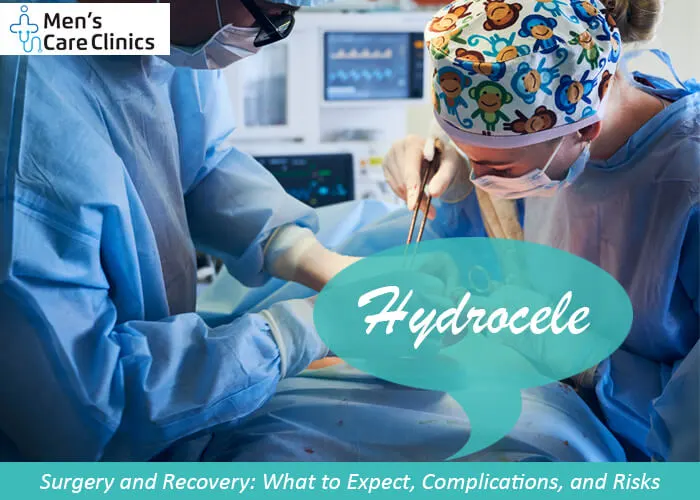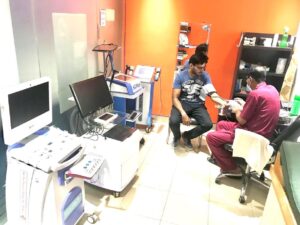Hydrocele Surgery and Recovery: What to Expect, Complications, and Risks
A popular way to treat hydroceles is with hydrocele surgery, which is also called “Hydrocelectomy”. Even though the surgery is usually thought to be safe and effective, it is important to know what to expect during and after it, as well as the possible problems and risks that come with it.
What to Expect During Hydrocele Surgery
1. Anesthesia: You will typically receive anaesthesia before the surgery to ensure you are pain-free and comfortable throughout the procedure. The doctor of surgery and anesthesiologist will decide what kind of anaesthesia you will have (general or local).
2. Cut: The surgeon will cut in either the scrotum or the lower abdomen, based on the type of surgery that is being done. The hydrocele sac can be reached through this cut.
3. Fluid Drainage: The accumulated fluid within the hydrocele sac will be carefully drained during the surgery, reducing the swelling.
4. Sac Treatment: Depending on the specific case and surgeon’s preference, the hydrocele sac may be either removed entirely or repaired to prevent further fluid accumulation.
5. Ending: Sutures or surgical pins will be used to close the cut.
Recovery after Hydrocele Surgery
Recovery after hydrocele surgery varies from person to person, but here are some general aspects to consider:
Managing Pain: After the surgery, you might feel some light to moderate pain or discomfort. To help you deal with this pain, your doctor will give or suggest painkillers.
Swelling and Bruising: It is normal for the area around the surgery to swell and bruise. These effects should go away over time.
Activity Restrictions: You may be advised to limit physical activity, especially heavy lifting and strenuous exercise, for a few weeks to aid in the healing process.
Scrotal Support: Wearing supportive underwear, such as briefs, can help reduce scrotal discomfort and provide additional support during recovery.
Follow-Up Appointments: You will need to make follow-up visits with your doctor to make sure you are healing properly and to see how you are doing.
Resuming Normal Activities: Most individuals can gradually return to their regular activities within a few weeks, but it is essential to follow your surgeon’s post-operative instructions carefully.
Complications and Risks Associated with Hydrocele Surgery
While hydrocele surgery is generally safe, like any surgical procedure, it carries some potential complications and risks, including:
1. Infection: There is a chance of getting an infection where the surgery was done. More swelling, redness, warmth, or the formation of pus may be signs of an infection.
2. Bleeding: Too much blood can happen during or after surgery, but it doesn’t happen very often. It could mean that more medical help is needed.
3. Recurrence: In some cases, hydroceles can recur after surgery, particularly if the entire sac is not completely removed or if a communication issue persists.
4. Pain and Discomfort: While discomfort is expected after surgery, some individuals may experience prolonged or more severe pain, which may require further evaluation and management.
5. Scrotal Hematoma: A collection of blood in the scrotal sac (hematoma) may develop in rare cases. It can cause significant swelling and discomfort.
6. Nerve Injury: There is a minimal risk of nerve injury during surgery, which may lead to numbness or altered sensation in the scrotal area.
7. Adverse Reaction to Anesthesia: Some individuals may experience adverse reactions to anaesthesia, although this is relatively rare.














